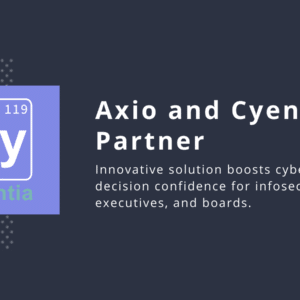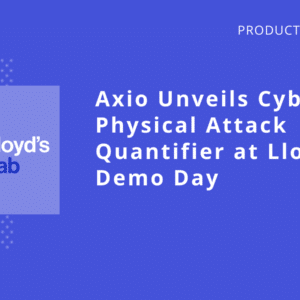In a world increasingly shaped by cyber threats, business leaders need more than vague estimates or crayon-based rankings to make informed decisions: they need clarity, relevance, and actionable insight. That’s where Axio’s Cyber Risk Quantification (CRQ) methodology comes in. It’s a pragmatic, value-centric, and scenario-based approach to understanding cyber risk in real business terms, empowering organizations to take control of their cyber exposure. Here’s how it works.
At the core of Axio’s methodology is a scenario-based risk modeling that transforms abstract threats into relatable, real-world business events. Rather than an asset-by-asset approach, we focus on modeling how a cyber event might realistically unfold and disrupt an organization’s core business activities. Scenarios are scoped as representative examples of the risks that matter most and are quantified by following the potential event as it unfolds—like a table-top exercise.
While many CRQ approaches focus most of the analysis on assigning probabilities for rare events, Axio focuses on what counts: the impacts of the event. Our philosophy is simple: impacts are the part of risk that matters most to the business.
We encourage organizations to focus on their critical value drivers—the functions, assets, and services that matter most—and imagine what a disruption might look like. What happens when key systems are down? When sensitive data is leaked? When operations grind to a halt? We still account for probability, but it’s done at a level aligned with industry data and broader risk patterns, ensuring clarity without compromising realism.
Estimating impacts isn’t just a process of guessing. Axio’s methodology and platform breaks down impacts like lost income, response costs, and legal expenses into common-sense formulas that describe, in plain language, the financial consequences. For example, calculating the cost of external forensics can be as simple as: Hours of Forensics * Hourly Forensics Rate.
Each variable in the formula is expressed as a range of values to capture uncertainty, reflecting the inherent variability in how events might unfold. Our system then aggregates these variables and formulas into comprehensive loss estimates, complete with best-case, expected, and worst-case outcomes. This enables organizations to not only understand their risk in financial terms, but also to evaluate how mitigation strategies might change their exposure.
As simple as the quantification process is, we understand that security and risk teams are busy, and budgets are tight. That’s why Axio’s platform delivers fast time-to-value with an intuitive and efficient Quantification Wizard. Answering just a few quick questions, users can select and customize pre-built scenarios tailored to their industry and threat landscape. Each scenario is fully scaffolded with help text explaining each variable and formula, so that they can be easily customized and refined.
The output? High-quality dashboards and reports that communicate cyber risk in business language, enabling prioritization, budget justification, and strategic alignment.
Axio’s CRQ methodology is designed for today’s dynamic cyber risk environment. It is business-relevant, impact-focused, methodical, and fast. By aligning technical risk with business impact and presenting results in clear financial terms, Axio empowers organizations to make better, faster, and more strategic cyber decisions.




